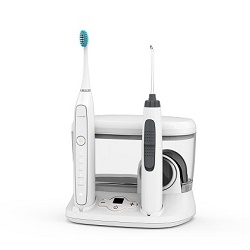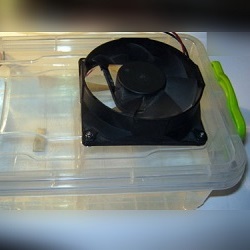Varieties of air cleaners
Air purifiers for the home are not uncommon these days. Many are forced to use them because of housing, located next to the production. In addition, the ecological situation in large populated cities is conducive to the use of these devices, because the air in apartments is often not as clean as they want. The use of cleaners is also due to hygienic (sanitary) considerations. For example, dust flying in the air of an apartment contains pathogens, fungus, pathogens of many infections and allergens.
All air purifiers are divided into different categories depending on the principle of their operation. Below we look at what types of cleaners are.
Content
- 1 Photocatalytic air cleaner
- 2 Adsorption (carbon) cleaners
- 3 Air cleaners using fine mechanical cleaning technology
- 4 Primary filters (mechanical air cleaners)
- 5 With electrostatic (ionizing) filter
- 6 Water filter air cleaner
- 7 Two types of filtering in one device
- 8 3 degrees of air filtration in one device
- 9 Ultraviolet based air purifier
- 10 Air cleaner for the car
Photocatalytic air cleaner
The device of this device is very simple, which makes it versatile in use. Essentially, this UV lamp housing with catalyst (acting as a filter) inside. The use of porous glass in the role of a filter in an advantageous way allows you to circumvent the problem of constant maintenance of the device. In other words, there is no need to constantly change the filters, and this is a significant savings on consumables. Such a filter absorbs well even the smallest particles of garbage (household and street dust, lint, etc.). The application of titanium dioxide to the surface of the filter allows the light rays to pass and absorb. In addition, he plays the role of a catalyst, which was mentioned above.

The scheme of the photocatalytic filter
The ultraviolet rays fall on the dioxide coating and, acting on it, start the oxidation process, which copes with the decomposition of organic substances.
Such an approach in the air filtration system is extremely effective in the case when it is necessary not only to clean the air in the apartment, but also to moisten it. Humidification occurs due to the fact that in the process of oxidation of the filter organics decomposes, forming moisture and carbon dioxide. After passing through the photocatalytic filter, at the opposite end of which is an ultraviolet lamp (range A), the air is blown clean and humidified.
The effectiveness of photocatalytic air purifiers is difficult to overestimate.
- Such air purifiers completely rid the house of germs, unpleasant odors, dust and small debris, wool.
- Skin particles, dust mites, soot layer, carbon monoxide, mold spores and pollen are eliminated.
- Air purifiers with such a filter will be extremely useful during prevention of respiratory viral diseases (FLU, tuberculosis, etc.) and also contribute to the purification of hydrogen sulfide.
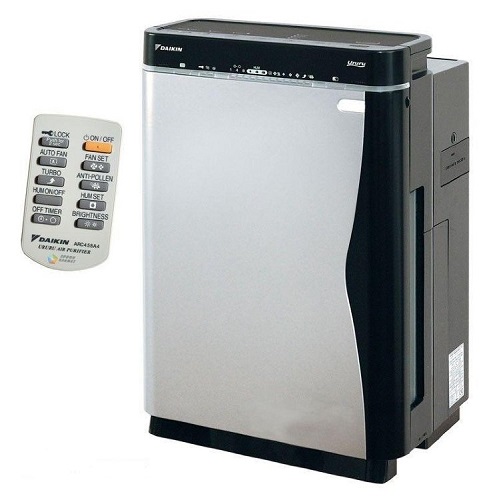
Daikin MCK75J Moisturizing Air Cleaner
Adsorption (carbon) cleaners
The main task of devices with such a filter is the physical absorption of gas molecules. They are literally absorbed into the pores of the filter. As regards the removal of volatile and semi-volatile compounds, carbon filters are not equal if the molecular mass of such particles is rather large for interaction. The main indicator of the resource and efficiency of the device is volume of absorbent materials. Of course, the more they will be, the greater the amount of dirty air the device will be able to pass through itself. Performance also depends on this, and the dependence is direct here: the larger the filter volume, the larger the pores in it through which the suction takes place.
This type of air purifiers implies a change of filters as maintenance. When consumables get clogged, performance drops dramatically. Just clean the filter itself is unlikely to succeed, as it is literally soaked with small particles. Superficial cleaning will give nothing. In this case, happy with a small price for this type of consumables.
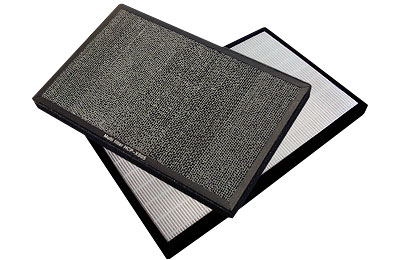
Carbon filters are one of the cheapest on the market, and they can be changed quite often, without waiting for the pores to become completely clogged.
Adsorption air purifiers are often equipped with a pre-filter (mechanical). This move is quite justified: falling directly on the carbon filter, large particles of dust will quickly clog the micropores, which is why the consumable itself can quickly become unusable.
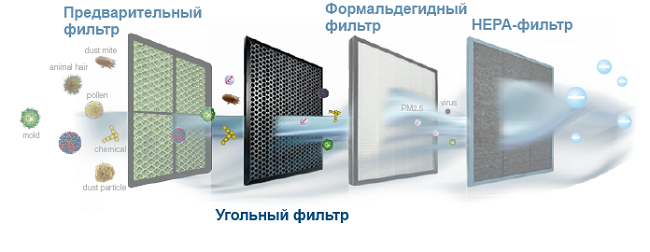
Plays an important role in efficiency the form of the filter itself.
- The adsorption filter, which is based on fine activated carbon, will cause additional air resistance.
- In the case when the pores and granules in the filter are rather large, blowing through will be more efficient, and this will lead to a larger volume of air to be purified.
If the carbon filter corrugated, the volume of the filtering surface, respectively, will be increased compared with conventional consumables. The pleated filter absorbs gases better due to its wide surface.
Carbon filters are not recommended for use in high humidity environments. In addition, if small-molecule gases are often present in the room, the efficiency of using this type of device will be extremely low.To solve this problem, it is recommended to resort to the help of formaldehyde, sulfurous anhydride or nitrogen dioxide. The device based on carbon filters will not be the most effective for use in urban gas atmosphere, therefore, it is often used in conjunction (2 in 1) with other filters. For example, one of those that will be discussed below.
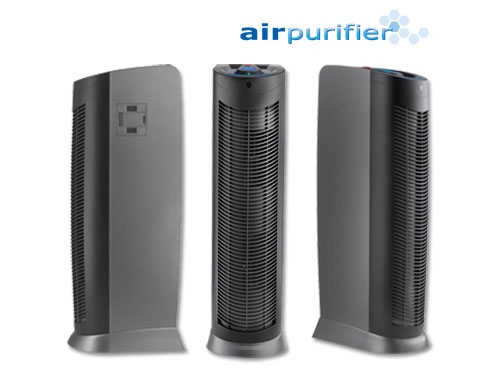
Hoover Air Purifier with HEPA Filters and Charcoal
Air cleaners using fine mechanical cleaning technology
Such air purifiers are also called HEPA (High Efficiency Particulate Arresting or, in other words, the delay of particles of increased efficiency). Devices with HEPA-filter are in great demand in large cities, because these simple devices are very effective.
In addition to the fact that such filters have increased efficiency, it should be noted that they are the basis of many air cleaners. The principle of operation of such a device is as follows: air under pressure is sucked into the interior of the apparatus, and, passing through the filtration system, is blown clean. Inside the filter, dirt settles in from 0.3 microns in size, which is almost 99% of all the fine debris present in the air we breathe. According to research, almost all known allergens, as well as ticks and spores have a much larger size (from 1 micron). Due to this, HEPA filters are recommended to be used by anyone who suffers from a respiratory allergy.
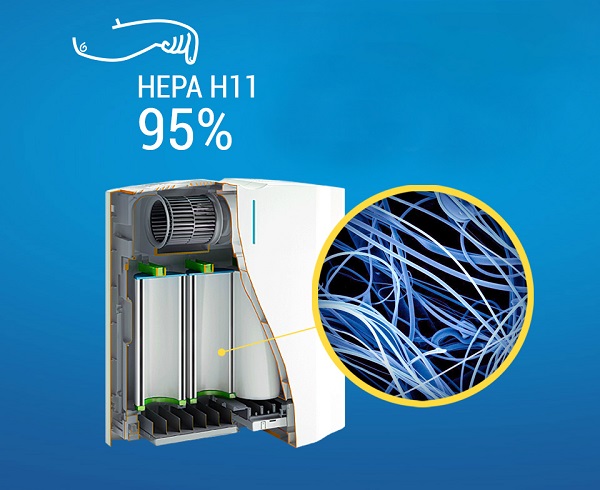
The international classification divides HEPA filters into 5 categories: H10,11,12,13,14. The quality of the filter increases depending on the numbers. For example, class H13 retains debris with a volume of 0.3 μm and an efficiency of almost 100%.
In terms of consumables, HEPA filters are not much different from their counterparts. The larger the area of the filter itself, the greater the amount of dust in the stream it is able to process and absorb. In addition, large filters last longer, because in order to score, it will take more time. Not the last role played by the form of consumables. It is important to ensure that the corrugated coating is solid, which will provide constant effective filtration. If the fold fits to the other too tightly, this may cause the filter to be difficult to blow, which will adversely affect its effectiveness. Some consumables manufacturers use synthetics instead of cotton resources.
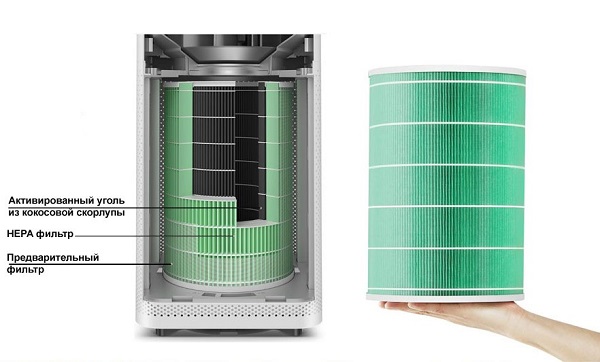
Xiaomi Mi Air Purifier Air Purifier
There is an opinion that the best material for HEPA filters is paper and derivativesbecause it helps to trap debris inside the filter with the greatest efficiency. In addition, paper has the least airflow resistance. But there are some downsides to this.
- It is important to remember that the paper from which the filter is made is very thin, so it is easy enough to damage it when replacing. Most manufacturers try to make it protected (for example, corrugation).
- Another disadvantage of consumables is their biological neutrality. They do not possess antiseptic properties by themselves. The surface of the HEPA Consumer is a great place for colonies of bacteria, both useful and not so good. Of course, sooner or later, it will affect the quality of the blown air.
An improved analogue of HEPA is ULPA filter, retaining particles up to 0.1 micron in size with an efficiency of up to 99.8%. They have the same principle of operation, but UPLA can be called the next generation of HEPA. True, so far they are extremely rare.
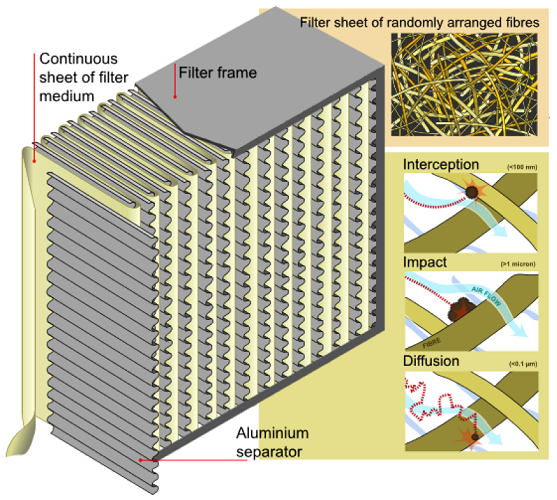
New HEPA ULPA Filter
Primary filters (mechanical air cleaners)
The simplest and at the same time the most optimal solution for an apartment. Outwardly, these filters are ordinary. metal gridwhich is most often used for pre-cleaning, in conjunction with others. Their main purpose is to delay coarse dust and pet hair.
Such consumables are designed to protect from dust not only users, but also the electronics of the technology itself. For example, HEPA filters are most often protected by mechanical ones in order to delay their rapid wear. The most common models of mechanical air cleaners are able to trap particles as small as 5-12 microns. There are few particles of this size in the dust, but the role of the reticulum, which restrains them, is extremely important.
Sinking on the preliminary filter, large debris does not fall on the fine filters, thereby prolonging their operation.

Replacing the strainer is much easier and cheaper than buying a HEPA or charcoal filter. The obvious advantage of this type of filter is their long service life. That's right - they are reusable.To clean the mesh of dirt, it is enough to remove it from the air cleaner, vacuum or rinse under water.
With electrostatic (ionizing) filter
Filters with an ionizer are widespread for quite some time. The basis of the principle of operation is simple mechanism of attraction of bipolar electric charges. Passing through the ionizing chamber, the dirt particles receive a charge of "+" and settle on a plate that is charged with "-". Filter plates can be easily cleaned by rinsing them with soapy water. In addition, such air purifiers act as air ionizers.
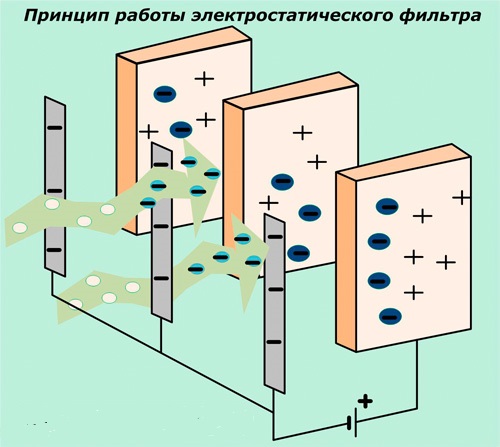
Electrostatics is able to clean the room from the smallest particles well, using simple physical laws. In some cases, experts say that the degree of cleaning efficiency of ionizing filters may be higher than that of HEPA. Together with the long service life of consumables, this type of device is recommended for use in apartment conditions.
Quite often, electrostatic filter air purifiers come with carbon filters or the same HEPA. Sometimes you can find an ion air cleaner with an ultraviolet lamp.
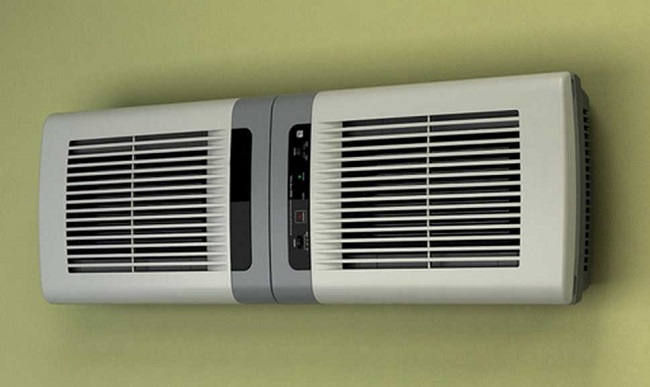
Water filter air cleaner
Such devices are also called "air wash". Most often they go in conjunction with the air conditioner. The principle of the water filter is uncomplicated, but at the same time effective enough. The fan sucks in dirty air, giving the dirt particles a “+” charge (as in electrostatic filters), after which they fall on a disk that has a “-” charge. Dust is attracted to the disk, then washed off in a special receiver-pallet.
This filter also does not need to be changed, it can be served at home. Simply remove it from the instrument, clean and reinsert it. Of course, this has a positive effect on the evaluation of devices based on water filters. Quite often, the last word is for those who can offer cheaper, if not free service.

The water filter can also be supplied as a class 2 device in 1. For example, the HEPA filter can be installed to help with the water filter, but this is not a requirement. We will talk about such devices below.
Two types of filtering in one device
Quite often, one type of filtering air from dirt is not enough. For example, in the case when dust and dirt can have different sizes: wool, house dust, allergens, etc. A quartz air cleaner with photocatalytic filters is present on the market. HEPA filters often have humidifiers as an additional source of pre-filtration.
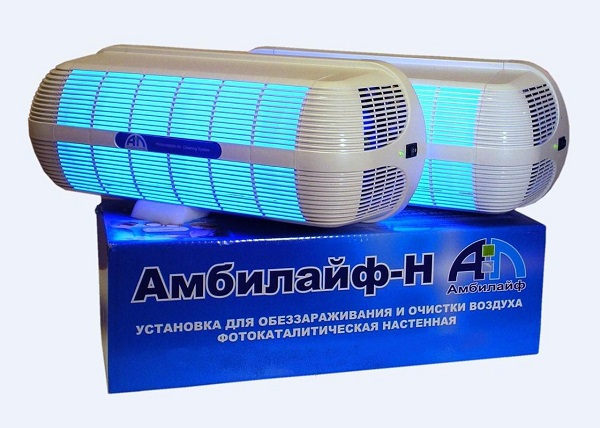
Quartz air cleaner Ambilife-N with photocatalytic filter
Such devices are widely represented in the domestic market and are widely popular with people suffering from allergic diseases. Carbon filter in conjunction with the mechanical will be a great assistant in the fight for clean air in any apartment.
The downside of this type of device is maintenance, which will require certain investments, because Consumables, however, will have to be changed from time to time, and in the case of HEPA filters they may not be cheap. Water and mechanical filters (mesh) do not need to be replaced.
3 degrees of air filtration in one device
When it comes to a multifunctional device, most often refers to hydro-air filtration. with the possibility of ionization. Such devices are necessary where the highest demands are placed on cleanliness in the room (for example, a hospital ward).
As a pleasant bonus, such a multifunctional device (3 in 1) can also be used as a flavoring agent to give the air in the room a pleasant freshness and fill it with favorite flavors. This is done using aroma oils added to the humidifier sprayer.
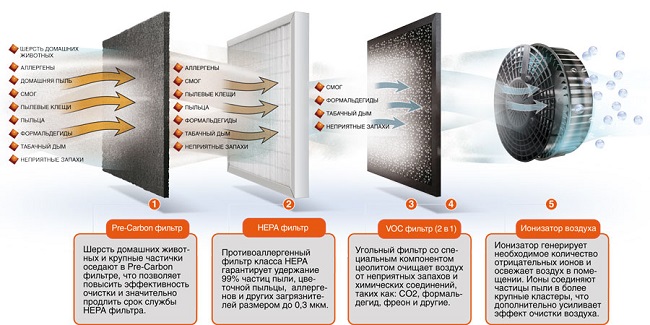
VOC filter for air cleaner AP-410F5 / F7
As a rule, such devices function alternately: cleaning, then ionization or humidification. Using all three modes simultaneously is not possible. Consumables must be changed in a timely manner, as a clogged filter deteriorates the flow rate, and therefore its optimal operation is impaired. This may cause damage.
The simplicity of the device allows the use of such air cleaners for a long time. If you do not forget to change the filters on time, then such a device will last more than one year, helping to refresh and purify the air in your apartment or any other room.
Ultraviolet based air purifier
Most often found in the multifunctional air purifiers.UV air purifier is one of the first devices of this type, at the same time and the safest. The principle of its operation is similar to quartz (this device is based on it). Dust, falling into the hole on the body, is exposed to UV rays, which change its structure. As a result, the air is completely clean.
UV cleaners are often used in medical institutions, where it is necessary to keep sterility, without resorting to additional methods of sanitation of the room.
Numerous studies confirm the harmlessness to humans, therefore, such air cleaners are used even in apartments where there are small children.
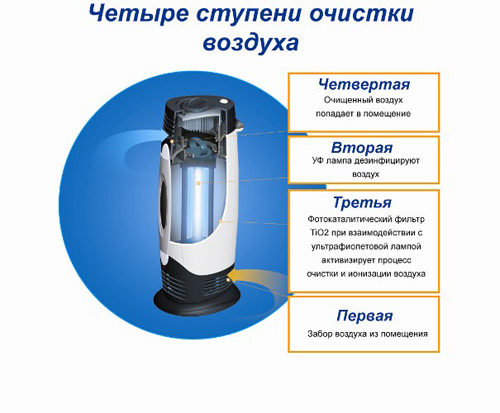
In the Soviet Union, certain times enjoyed great popularity. quartz lamps, ex big deficit. It was possible to get them with great difficulty. They can be considered the first domestic air purification, on the basis of which numerous analogues have appeared over time.
The device of such a device is very simple: a fan with a UV lamp inside the case. Passing through its light, the air becomes purified. The obvious advantages of such devices include:
- lack of ozone formation,
- the air in the room does not contain the products of its decay - this means that the operation of the device is possible, even when there are people in the room;
- consumes little power, no noise, very simple and unpretentious to maintain;
- copes with mold and fungus, compact and easy to transport.
Air cleaner for the car
A car air cleaner is just as necessary as a home air cleaner, and in some cases even more. The car is a direct participant in the road traffic, being in the middle of a road filled with hundreds of similar machines that constantly emit refined products into the air.
If air purification in an apartment depends on many factors (remoteness from harmful production, etc.), then a car air cleaner is needed immediately, by default. In order not to inhale all the “flavors” of a multi-kilometer cork, many people buy an ionizer. Most often it is a device cigarette lighter. Despite its small size, such a device copes with its work as “excellent”.
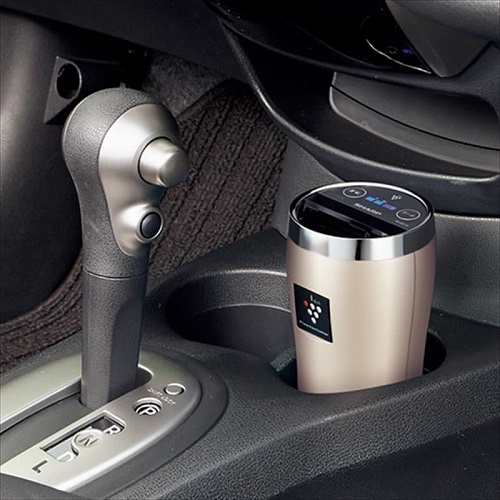
The principle of operation of the ionizer for cars remains the same as in the case of a stationary device: the generation of corona charges,which slip between the cathode and the anode, i.e. electrodes having positive and negative charges. The air intake blows dirt from the street into the car, the ions, meeting with particles of dirt, transfer charge to them. Carried away by the air flow, the particles are deposited on the plates (electrode), which are the "traps" for the charged dirt, completely settling on them.
As you can see, the problem of air filtration in various rooms and inside the car is quite acute. The ecological situation does not give reason for optimism, and this means that it is necessary to take care of your health on your own by resorting to specialized means.

/rating_off.png)







